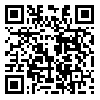BibTeX | RIS | EndNote | Medlars | ProCite | Reference Manager | RefWorks
Send citation to:
URL: http://ioh.iums.ac.ir/article-1-524-en.html
Background and aims
Chlorine gas is a dangerous material that is used in chemical industries. In spite of the attempts for chlorine gas release control, sudden releases still occur in the related installations. Not taking proper emergency measures after chlorine gas dispersion may result in serious harm to health of the personnel and the people residing around the industrial area. The present study considers chlorine gas dispersion scenarios, determines emergency levels and presents an optimized pattern for more effective and faster response with the least required measures for emergency conditions control.
Methods
In the present paper by using Hazard and Operability Study (HAZOP) and risk matrix the possible scenarios of chlorine gas dispersion in storage tanks unit of a petrochemical complex were considered. Then the intervals of these scenarios were determined with a view to Emergency Response Planning Guideline 1-2-3. With a view to the intensity of pollution extension and the population exposed to risk the scenarios were classified in the four emergency levels defined by Center for Chemical Process Safety (CCPS). Finally for each class of scenarios with a view to the related emergency level an optimum pattern of response plan in emergency conditions was presented.
Results
On the basis of the results of this study, chlorine gas dispersion scenario of the catastrophic explosion of the tank and scrubber system failure in the summer was classified in emergency level 4, in the winter in emergency level 3, chlorine gas dispersion due to chlorine lines rupture in the summer and winter in emergency level 3 and chlorine gas dispersion due to leakage of flanges and gaskets in emergency level 2 according to emergency levels of CCPS.
Conclusion
The results of this study showed that systematic process risks analysis by use of risks recognition methods such as HAZOP and consequence analysis may have an effective role in recognition of the possible major events. Also by classification of release scenarios in CCPS emergency levels, we can select the best pattern for emergency conditions management.
| Rights and permissions | |
 |
This work is licensed under a Creative Commons Attribution-NonCommercial 4.0 International License. |





